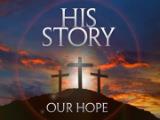-
The Call Of The Cross Series
Contributed by Tim Smith on Nov 28, 2017 (message contributor)
Summary: the cross is not just a symbol we look to or place our faith in. It’s not just what Jesus did for us. It is what Jesus invites us to. It is a way of life for those following Jesus.
The Call to the Cross
Mark 8:34-38
The Cross. What comes to mind when you hear that word? A decorative altar ornament? Something that rests on top of a church steeple? A piece of jewelry hanging around the neck? Mention the word "cross" to the people of Jesus' day and a very different image came to mind. Too many times they had seen the road leading into a city lined with stakes and the enemies of Rome nailed to them. In Jesus’ day, more than 100 men had been crucified at Caesarea Philippi. Crucifixions on a smaller scale were also a common sight. It has been estimated that perhaps some 30,000 crucifixions occurred under the Roman authority during the lifetime of Christ. If Jesus was out to win a lot of followers, He picked the one image that would turn away most people. For when He said "take up a cross," they knew exactly what He meant, the most painful, humiliating and disgraceful thing of Jesus’ day and the one thing that everyone wanted to avoid.
The cross was the ultimate symbol of shame and defeat. It was the Roman form of capitol punishment that sought not only to kill the person but to strip them of every ounce of dignity on their way to death. They did this through public crucifixions on the most traveled roads into a city so the most people possible would see the criminals being crucified and the agony and pain they suffered which often lasted for days. The Romans thought the very word cross was obscene, never to be uttered in daily conversation. It was considered to be such a terrible death that Roman citizens were exempt from crucifixion, no matter their crime. So the cross was the worst thing imaginable and it’s shocking to say the least that Jesus used this imagery for following him. In Jesus’ day, it was the greatest symbol of shame. But Jesus changed all of that. Two thousand years later, the cross is no longer a symbol of shame and humiliation but an enduring symbol of sacrificial love, grace and forgiveness.
But the cross is not just a symbol we look to or place our faith in. It’s not just what Jesus did for us. It is what Jesus invites us to. It is a way of life for those following Jesus. The Latin word for cross is “crux” and means “a vital, basic or pivotal point.” It’s the moment when everything changes, and it is the point of no return because when it happens, there is no going back. On a cosmic level, the cross is the vessel through which God’s redemptive love was revealed to the world. But on a personal level, the cross is this intersection where when a person decides to follow Jesus and one life ends and another begins in Jesus.
Just prior to our Scripture today, the disciples were in the midst of a discussion about having no bread to eat when Jesus, the Bread of life, was in their midst. Jesus asks, “Do you have eyes to see and fail to see…?” They travelled to Bethsaida which was one of three main cities on the northern tip of Galilee where Jews in the first and second century BC had returned from Babylon and settled to live out their faith and prepare for the coming of the Messiah. This is the heart of the observant Jewish triangle in the North. These Jews were waiting, preparing and looking for the Messiah. So if anyone would know when the Messiah arrived, it was them. It was here that some people brought a blind man to Jesus to be healed. Jesus put some spit on his eyes and asked him if he saw anything. He answered that he had cloudy vision, seeing people but they looked like trees walking around. So Jesus puts his hands on the man’s eyes again and his eyes are restored and he is able to see clearly. This man was healed in stages which is unprecedented in Mark’s Gospel but a sign for the disciples that not only does faith comes in stages but so does coming to understand the true nature of Jesus’ Messiahship and His call of discipleship. As Jesus and the disciples continue to travel north, they reach the foot of Mount Hermon and Jesus asks, “Who do the people think I am?” They give various answers but then Jesus gets to the crux of the matter and asks, “Who do you say that I am?” Peter professes: “You are the Christ.”
Jesus uses these two events as a springboard to begin sharing with the disciples the nature of his discipleship: that he must suffer many things, be rejected by the religious leaders and then crucified. This must have been a shock to the disciples and their hopes and dreams for a triumphant Messiah who would rise to power and throw off the bonds of Rome. How could a rejected and crucified Jesus usher in God’s kingdom? So Jesus’ words were both inconceivable and intolerable. So you can understand Peter telling Jesus this must not happen and Jesus rebuking him by saying, “Get behind me Satan!” How those words must have cut to Peter’s heart, for Jesus was saying that Peter and the disciples stand in the way of Jesus’ path of Messiahship! It’s at this moment that Jesus looks up to the crowd and says, “Whoever wants to be my disciple must deny themselves and take up their cross and follow me.”

 Sermon Central
Sermon Central



